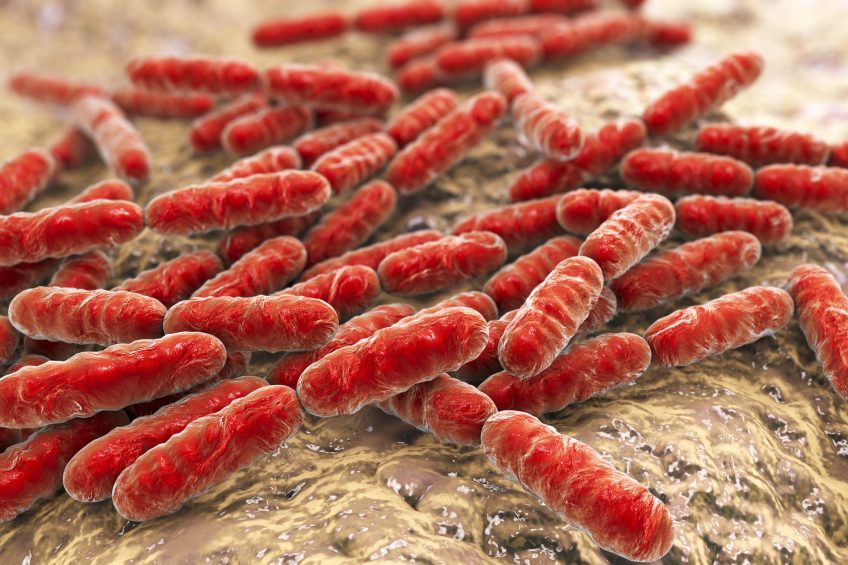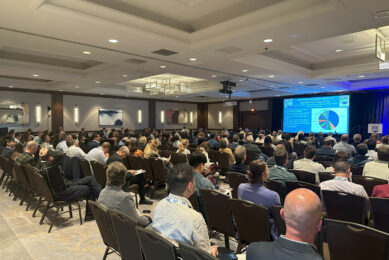Growth promotion with lactic acid bacteria

With antibiotics, used for growth promotion and disease prevention, being banned in an increasing amount of countries, the question is which alternatives exist? In Japan, trials with lactic acid bacteria appear promising for piglets and pigs.
In recent years, the prevalence of multidrug-resistant bacteria has been recognised as a problem. According to estimates by the Center for Disease Control and Prevention (CDC), in the United States, about 2 million people a year are infected and more than 23,000 people die as a consequence of antibiotic resistance. The World Health Organization (WHO) has also released warnings on the global expansion of multidrug-resistant bacteria.
One reason for the increase in multidrug-resistant bacteria is the overuse of antibiotics in medical settings. Various scientific societies have called for doctors to ensure their appropriate use; however, not all comply. Additionally, the administration of antibiotics used in the animal industry for promoting growth and preventing illness is also recognised as a problem.
The EU banned the use of antibiotics as feed additives as early as 2006. In 2012, the United States also virtually banned the addition of antibiotics to animal feed, when aimed at growth promotion and the prevention of disease. Similar developments are happening in Japan: in March 2017, the Ministry of Agriculture, Forestry and Fisheries Consumption in Japan decided that colistin sulfate as a feed additive will be excluded from the additive listing as from 31 March 2018. The movement to ban the addition of antibiotics to feed for growth promotion has been agreed upon on a global scale.
No effective means of substituting antibiotics
At present, there is no effective means of substituting antibiotics and there is concern that this will lead to a new problem with reductions in livestock productivity. Japan has a long history of using probiotics to increase livestock productivity and was the first country in the world to designate them as feed additives.
Lactic acid bacteria are used for preserving and manufacturing food products. They are recognised as safe and useful micro-organisms for humans and animals. The functions of lactic acid bacteria reported are not only the improvement of the intestinal flora, but recently, immune system-activating action. Moreover, they do not necessarily need to be living; in fact, killed bacteria powder has been reported to have an even greater effect on intestinal immune activity. The advantage of killed bacteria retaining its immune-activation effect is very welcome in the animal industry.
The immune activity of powder containing lactic acid bacteria (HS-1:Kazami) in vitro in macrophages and in vivo in mice was confirmed by T. Hashimoto and others. In a recent study, a rearing experiment using HS-1:Kazami additives during the piglet and growing period, aimed to investigate its application and development in the animal industry.
Feeding experiment
A live strain of lactic acid bacteria (HS-1) was used to inoculate a culture medium and then cultured at 30°C for two days. The isolated bacteria were heat-treated and freeze-dried to obtain dried powder (HS-1:Kazami), which was about 1012 cells/g.
The experiment used 24 triple cross (LWD x WLD) pigs (12 barrows and 12 female pigs) and three groups of eight pigs were assigned randomly. The experiment commenced when the average body weight of the pigs in each group reached 10kg. When the animals exceeding 30kg, the test feed was switched from piglet feed to growing feed, with the experiment reaching completion when the body weight of the pigs was 70kg. The HS-1:Kazami preparation on trial in this study contained 2×104/g feed.
The pig’s growth
As is shown in Figure 1, upon completion of the experiment, the HS-1:Kazami group exhibited roughly the same growth curves as the antibiotic group. The antibiotic-free group was found to have clearly delayed growth compared with the HS-1:Kazami and antibiotic groups.
Figure 1 – The time-course of body weight in each test group.

Additionally, the feed conversion ratio and average daily weight showed a significant increase in the HS-1:Kazami and antibiotic groups with respect to the antibiotic-free group. During the piglet period, mild diarrhoea was observed at a low frequency in all the groups. However, it was significantly more frequent in the antibiotic-free group. During the growing period, besides one incidence in the HS-1:Kazami group, no diarrhoea occurred.
Blood tests
The white blood cell count of the HS-1:Kazami group at 30kg, was significantly greater than that of the other two groups; however, no significant difference was found between the groups for other general tests, haemograms, or biochemical tests include of immunoglobulin G. As a result, there were no abnormalities in the nutritional status, liver function, or kidney function of the piglets in any of the three groups and combined with the daily observations of each individual, the addition of HS-1:Kazami to the feed can be said to have had no harmful influence on the piglets.
Analysis of faecal bacteria
As shown in Figure 2, faecal bacterial counts for Enterobacteriaceae, E. coli, Enterococcus and Bifidobacterium were significantly reduced in the antibiotic group compared with those in the other groups.
Typically, the intestinal flora is not sufficiently stable in the piglet period immediately following weaning, the effects of the rearing environment and stress readily alter the balance of the intestinal flora. Thus, given that antibiotics directly act on Enterobacteriaceae, it is likely that they have a large influence on the intestinal environment.
Figure 2 – Number of intestinal bacteria.

This influence was found in faecal bacterial examinations in pigs with an average weight of 30kg. The antibiotic group, which had antibiotic additives that suppress the growth of gram-positive and gram-negative bacteria, had significantly reduced numbers of bacteria, including gram-negative Enterobacteriaceae and E. coli, as well as gram-positive Enterococcus. Moreover, there were also negative effects, such as a significant reduction in the useful bacterium Bifidobacterium. Therefore, the addition of antibiotics not only leaves the intestinal flora in disarray but also reduces the immune function.
Activating the immunity system
Lactic acid bacteria, unlike antibiotics, do not act directly, instead they act competitively towards pathogenic bacteria, particularly in the small intestine and their main role is to act indirectly to establish the dominance of useful bacteria.
Because the present study used heat-killed, rather than live lactic acid bacteria, it is likely that the peptidoglycan components of HS-1:Kazami acted by directly stimulating the intestinal immune system to boost immunity.
In the present study, IgA, the main constituent of the intestinal immune system, was not measured, and therefore, the findings cannot be discussed conclusively. However, in the blood tests performed on pigs at 30kg, the white blood cell count of the HS-1:Kazami group was significantly increased compared with the normal range.
Moreover, with regard to the physiological responses, IgG level was increased at 70kg relative to the IgG level at 30 kg, and the proportion of this increase was higher for the HS-1:Kazami group than for the other two groups, which may be related to an increase in immune activity.
FCR improvements
From above, it is clear that the addition of HS-1:Kazami (2×104/g feed) to pig farming feed for body weights of 10-70kg provides a growth-promoting effect similar to antibiotics and also has a feed conversion ratio improving effect.
The fact that it activates the immune systems of livestock means that it can increase their biophylactic potential. Thus, the components of killed lactic acid bacteria may be precisely the thing required to replace antibiotics. In the future, aiming for antibiotic-free feed, field trials for all livestock of HS-1:Kazami will be increased.
HS-1:Kazami has been on the market since summer of 2017 in Japan.
* The article was co-authored by Osamu Shidara, Hyogo prefectural technology center for agriculture, forestry and fisheries, Kasai, Hyogo, Japan; Toshiro Hashimoto, Hashimoto Food Technology consultant, Mito, Ibaraki, Japan; and Koji Ushizawa, Real Bioscience Laboratory, Inzai, Chiba, Japan.











